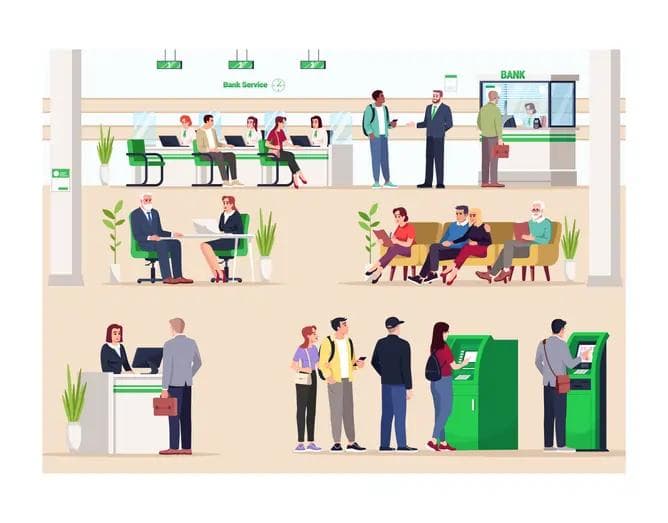CUSTOMERS ARE BANKING ON SERVICE DESIGN
CUSTOMERS ARE BANKING ON SERVICE DESIGN
Published by Gbaf News
Posted on February 24, 2018

Published by Gbaf News
Posted on February 24, 2018

James Goldhill, Director, Transform
The financial service sector is facing one of the biggest shake ups we have ever seen. Traditional financial services providers are in increasingly hot waters, yet still aren’t hitting the mark with customers. This leaves the door open for far more nimble and innovative companies, such as Monzo, Starling Bank and Tide, to come in and steal customers right from under the traditional players’ noses.
From children’s bank accounts to pensions, there isn’t a single sector that comes close to the lifetime engagement factor that the financial services have; amounting to a vast amount of data and intelligence on customers. Banks, however, are neglecting to utilise this information to offer customers better experiences and gain that all important competitive edge.
Service design is where most, if not all, traditional banks fall short. For most financial service providers service design appears as little more than an afterthought. The experiences you receive in store, on mobile and over the phone are disjointed to the point that each channel could be a different business. Platforms are not designed to offer the customer a seamless experience.
So why do traditional financial service providers get this so wrong?
The main factor is legacy systems. Replacing out of date technology that spans offices and branches up and down the country – and sometimes internationally – takes time, but that is only the first hurdle. You also must consider retraining those that have used these systems and processes for years and, in many cases, that results in having to totally overhaul a company’s culture.
Most of the high street banks have been around for hundreds of years, which means that the culture is so deeply ingrained, it then becomes a huge task trying to influence it. However, the better the employees experience, the better the customer experience. Despite banks having big teams whose aim is to drive change, they can’t move fast enough to design the seamless experiences consumers crave.
This is where financial service providers have a real opportunity. They are already growing in popularity because of their functional, easy to use apps and coherent offering.
What sets these fintech ‘disruptors’ apart is that they see data as they key to unlocking customer experience and they know that if a customer has a consistently positive experience, they will keep coming back for more.
When you can’t compete on price you have to compete on experience. The key to doing this is using service design as a point of difference. Banks should be developing deep customer insights at each life stage through known facts and transactional behaviour and using this to develop a service that the customer loves.
Metro Bank is an example of a bank that has tried to consider the rounded customer experience- so whilst a twee example, offering bowls of water and biscuits to dogs is a way of reducing barriers between the customer and the bank and improving overall engagement. This is great, but it’s also niche. People with a higher digital maturity are going to want far more from a bank and traditional providers need to think about how to join the online and physical to give the best experience.
The public sector, for example, has gone to great lengths to invest in a proper understanding of users and applying an informed plan to service design. Over the last 7 years they have gone through different phases, including learning and understanding their user’s needs and how they can meet them. Part of this involved rigorous testing to prove what works and give the teams chance to improve on the concepts they have created. This means that when it comes to building a solution, they already know that it is going to work.
The fact is that so far big banks haven’t felt the need to change. Competition is what drives evolution in business and the banks have historically all offered below par customer experience. They can almost get away with it because they all offer similar products and have little to differentiate themselves.
Up until now that strategy has worked, but with new entrants developing products that use data to not just give customers what they want, but to also offer an enjoyable aligned experience, the time has come for banks and traditional financial service providers to break the mould and invest in becoming different.
James Goldhill, Director, Transform
The financial service sector is facing one of the biggest shake ups we have ever seen. Traditional financial services providers are in increasingly hot waters, yet still aren’t hitting the mark with customers. This leaves the door open for far more nimble and innovative companies, such as Monzo, Starling Bank and Tide, to come in and steal customers right from under the traditional players’ noses.
From children’s bank accounts to pensions, there isn’t a single sector that comes close to the lifetime engagement factor that the financial services have; amounting to a vast amount of data and intelligence on customers. Banks, however, are neglecting to utilise this information to offer customers better experiences and gain that all important competitive edge.
Service design is where most, if not all, traditional banks fall short. For most financial service providers service design appears as little more than an afterthought. The experiences you receive in store, on mobile and over the phone are disjointed to the point that each channel could be a different business. Platforms are not designed to offer the customer a seamless experience.
So why do traditional financial service providers get this so wrong?
The main factor is legacy systems. Replacing out of date technology that spans offices and branches up and down the country – and sometimes internationally – takes time, but that is only the first hurdle. You also must consider retraining those that have used these systems and processes for years and, in many cases, that results in having to totally overhaul a company’s culture.
Most of the high street banks have been around for hundreds of years, which means that the culture is so deeply ingrained, it then becomes a huge task trying to influence it. However, the better the employees experience, the better the customer experience. Despite banks having big teams whose aim is to drive change, they can’t move fast enough to design the seamless experiences consumers crave.
This is where financial service providers have a real opportunity. They are already growing in popularity because of their functional, easy to use apps and coherent offering.
What sets these fintech ‘disruptors’ apart is that they see data as they key to unlocking customer experience and they know that if a customer has a consistently positive experience, they will keep coming back for more.
When you can’t compete on price you have to compete on experience. The key to doing this is using service design as a point of difference. Banks should be developing deep customer insights at each life stage through known facts and transactional behaviour and using this to develop a service that the customer loves.
Metro Bank is an example of a bank that has tried to consider the rounded customer experience- so whilst a twee example, offering bowls of water and biscuits to dogs is a way of reducing barriers between the customer and the bank and improving overall engagement. This is great, but it’s also niche. People with a higher digital maturity are going to want far more from a bank and traditional providers need to think about how to join the online and physical to give the best experience.
The public sector, for example, has gone to great lengths to invest in a proper understanding of users and applying an informed plan to service design. Over the last 7 years they have gone through different phases, including learning and understanding their user’s needs and how they can meet them. Part of this involved rigorous testing to prove what works and give the teams chance to improve on the concepts they have created. This means that when it comes to building a solution, they already know that it is going to work.
The fact is that so far big banks haven’t felt the need to change. Competition is what drives evolution in business and the banks have historically all offered below par customer experience. They can almost get away with it because they all offer similar products and have little to differentiate themselves.
Up until now that strategy has worked, but with new entrants developing products that use data to not just give customers what they want, but to also offer an enjoyable aligned experience, the time has come for banks and traditional financial service providers to break the mould and invest in becoming different.
Explore more articles in the Banking category











